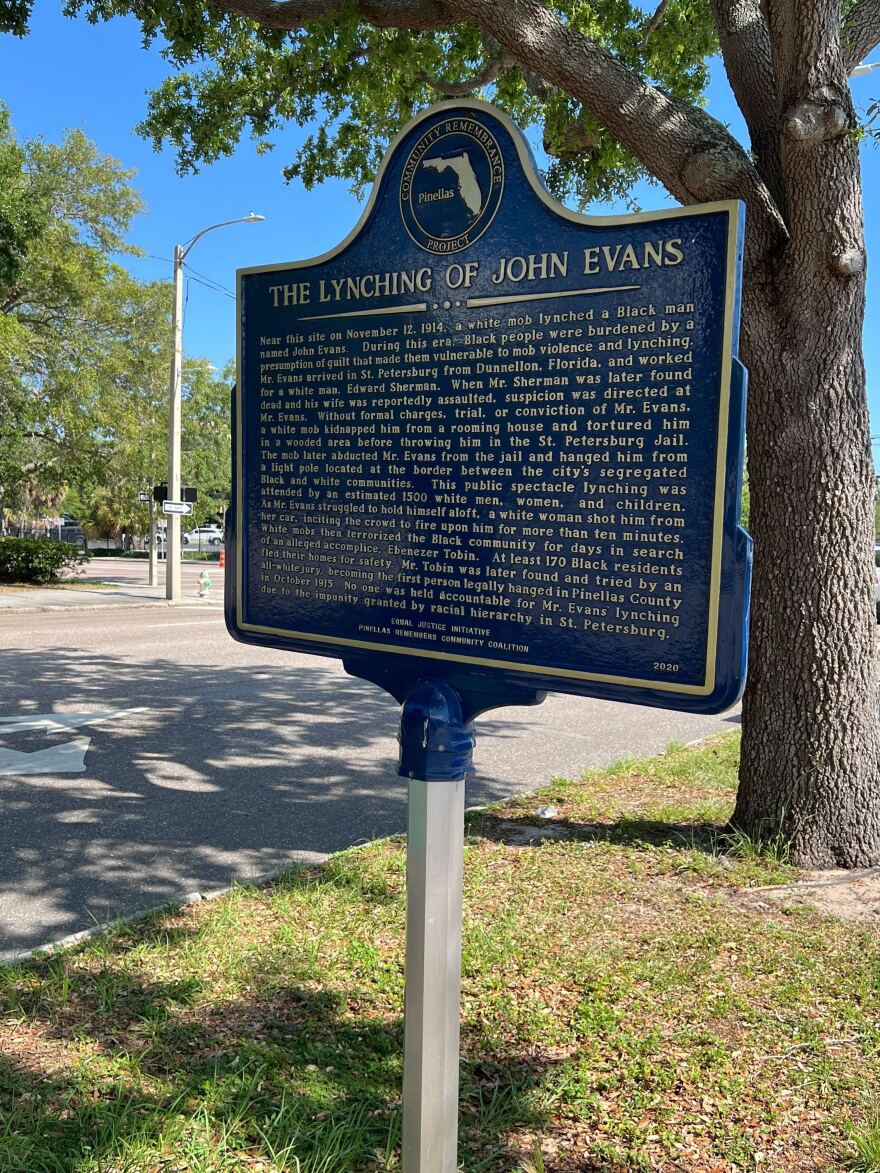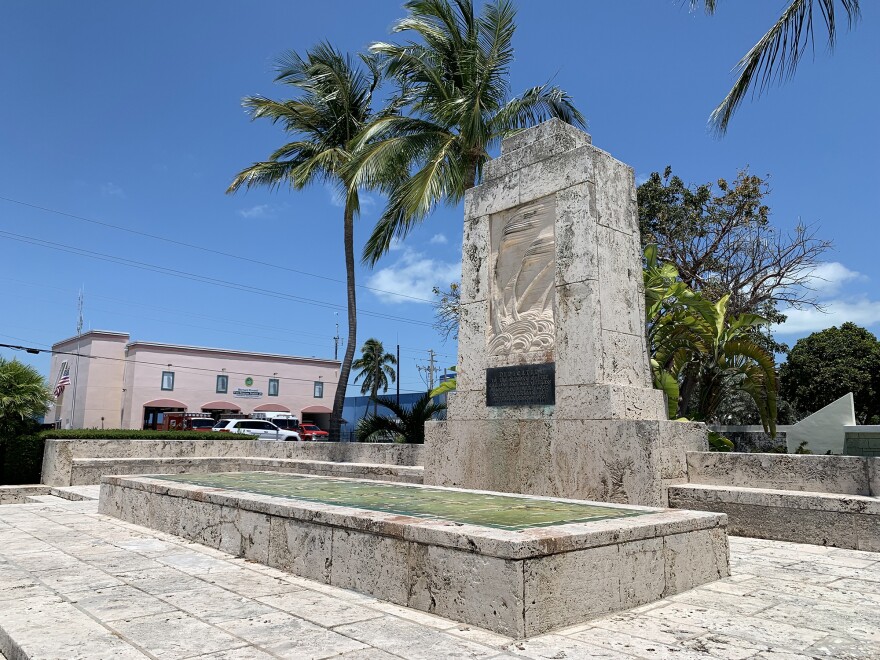The U.S. is dotted with historical markers. You can usually spot one as a plaque on the ground or a metal sign.
“There's more than 180,000 markers in this country so far. We keep putting more and more up,” Laura Sullivan, investigative reporter for NPR, said Friday on The Florida Roundup. Sullivan has investigated historical markers as part of the NPR series Off The Mark.
“… we found more than 35,000 different groups and individuals and societies and towns and businesses have put up historical markers. They generally cost about $3,000 to make, give or take, and you just need someone to give you a little spot of land,” Sullivan said.
There are plenty of historical markers in the Sunshine State as well.

In St. Petersburg, a marker sits near the site where a Black man named John Evans was lynched by a white mob in 1914. It’s on the corner of Dr. Martin Luther King Jr. Street and Second Avenue South, behind Tropicana Field and next to a U-Haul building.
“The marker is there to remind people of racial terror and factual racial terror occurrences. And that happened in the city of St. Petersburg,” said Danny White, president of Pinellas Remembers, a coalition documenting the legacy of racial terror in Pinellas County.
In February, Miami-Dade County unveiled the Arthur Lee McDuffie State Historical Marker in Miami, on the corner of 38th Street and North Miami Avenue. McDuffie, a Black father and former U.S. Marine, was beaten to death by four white police officers 45 years ago. The officers were acquitted by an all-white jury, leading to protests and riots in the county.
“States, cities, counties, even the United States don't like to mark bloody places. They don't like to memorialize places where dirty things happened in their provinces. So they don't just put up a marker like that, and this is a pretty tragic affair,” said Dr. Marvin Dunn, a historian and professor emeritus at Florida International University. Dunn wrote the text on the marker honoring McDuffie.
“When I wrote the narrative for that marker, I sent it to the state explaining what had happened, and I indicated that Mr. McDuffie had been beaten to death by half a dozen white Metro-Dade police officers. And the state rejected that wording and sent it back without the word white in it. Just beaten to death by half a dozen police officers. And I told them, if they don't put the word white back on the marker, they should take my name off of it,” Dunn said. The finished marker does say McDuffie was killed by white officers.
Sullivan said historical markers have a darker side, as they’ve been used to manipulate how American history is told.
“We found significant distortions in the South when it comes to telling the history of the Civil War, we found more than 500 markers that glorify the Confederacy, or vilify the Union, or just falsify the reasons for the war,” Sullivan said.

For example, when it comes to markers mentioning plantations, Sullivan said almost 70% of them don’t talk about slavery.
“Even in Florida, we found nine of these markers that talked about plantations that don't mention slavery. We found more than 500 markers that talk about notable men and their notable houses without mentioning the forced, free labor that made that kind of work possible. There's eight of those,” Sullivan explained.
Sullivan noted groups in the 20th century also erected markers to oppose civil rights gains in the U.S.
“One of the groups that we saw that was doing this was the United Daughters of the Confederacy, which put up more than 600 markers glorifying the Confederacy, and really making slavery sound like a pleasant experience,” Sullivan said.
But Sullivan said it’s not easy for states to change or get rid of historical markers. They also aren’t considered in discussions about U.S. history.
“They've really flown under the radar of all of this conversation that's gone on over the past few years about how do we want to tell the country's history and the past? And how do we explain slavery? And a lot of them that we saw really do this same thing where slavery wasn't that bad.”





